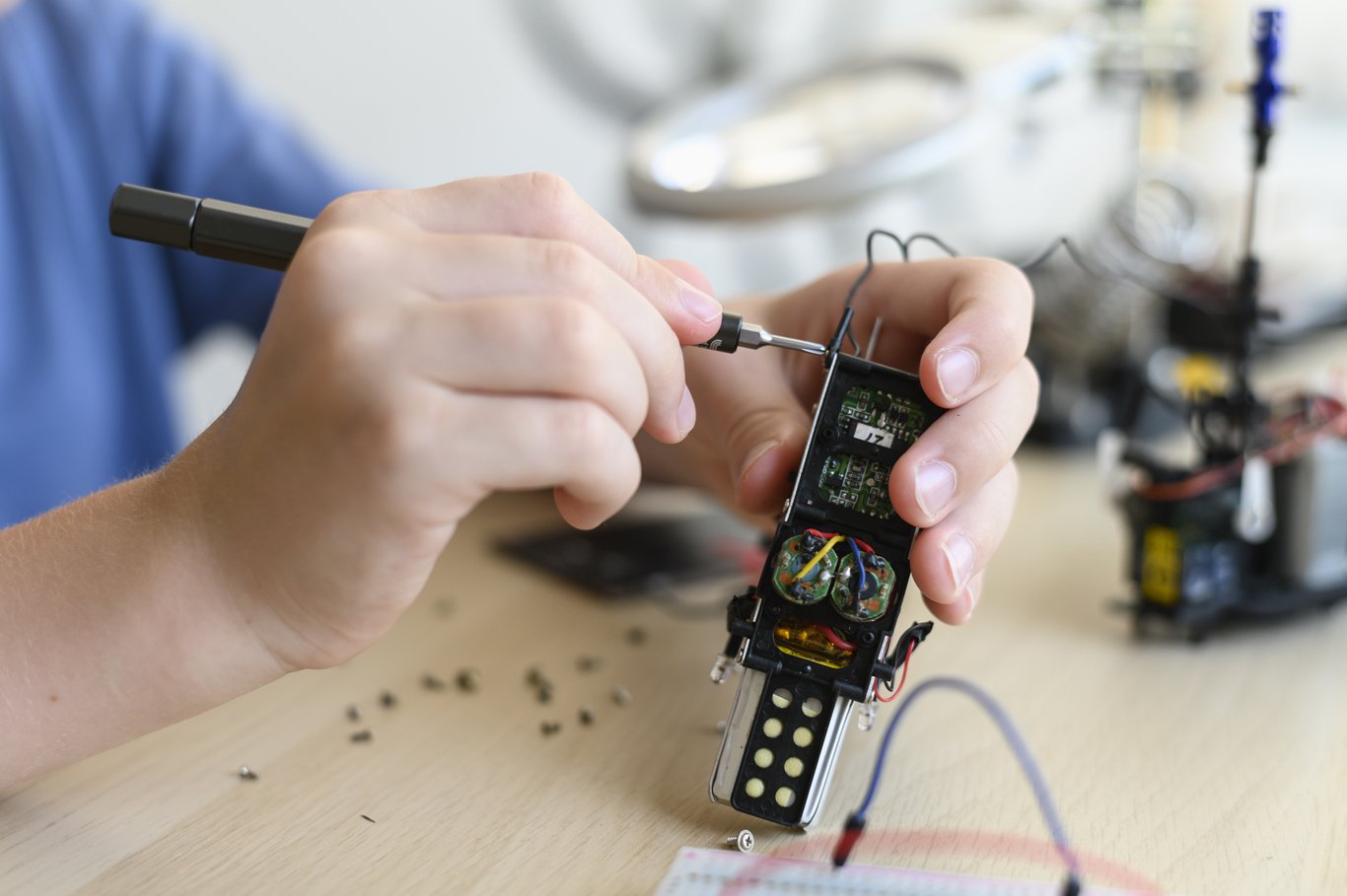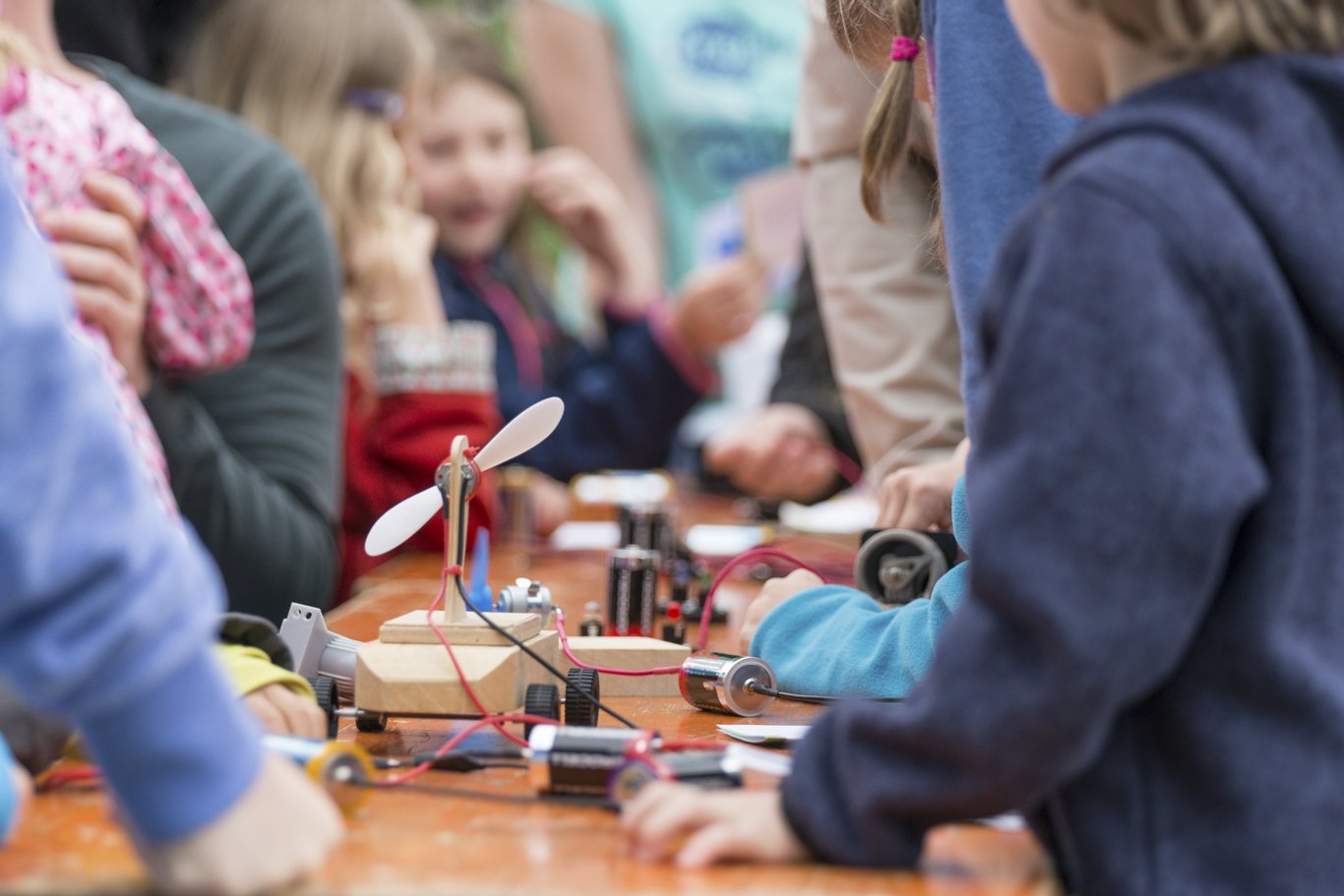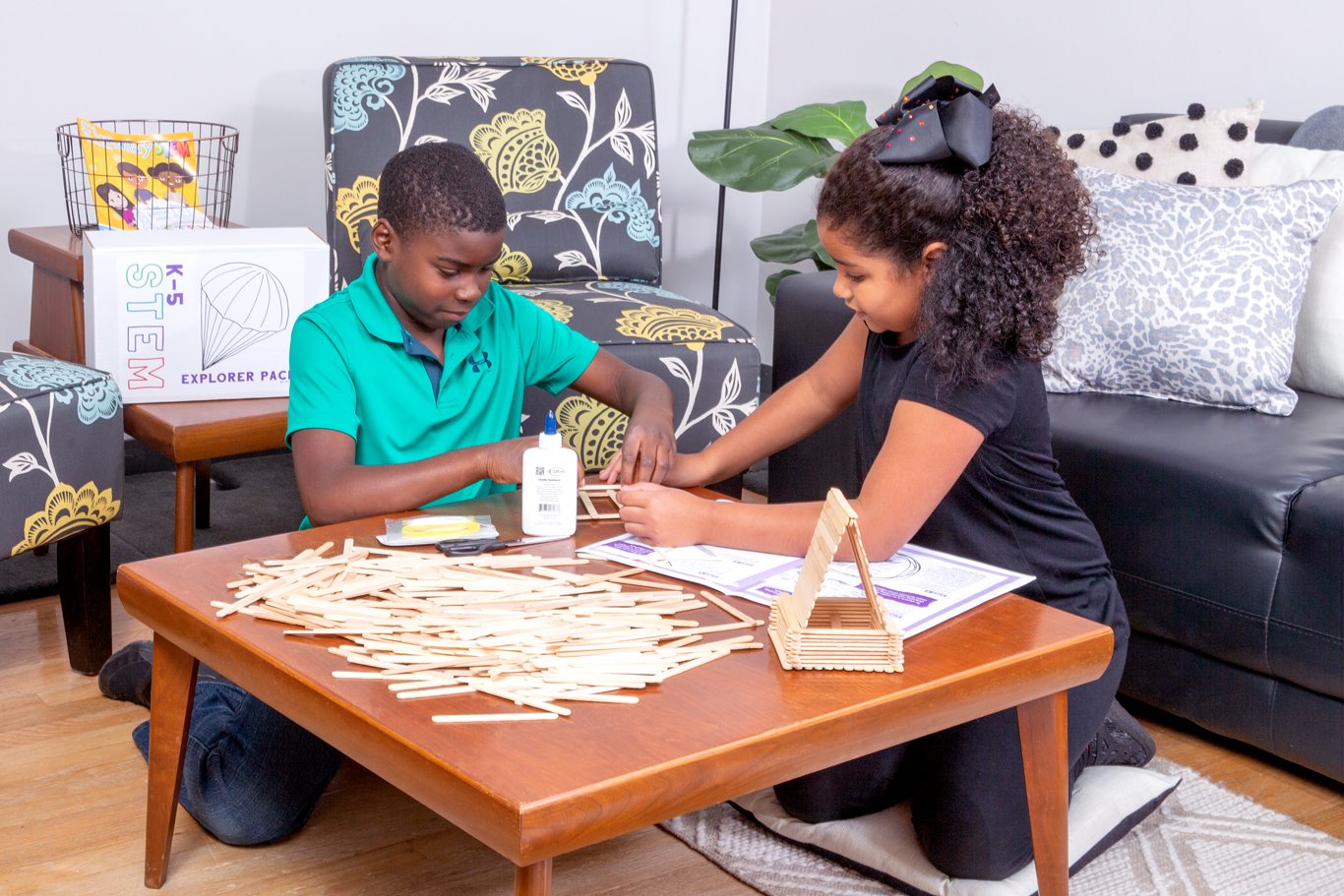Updated 6/17/24
Kid Inventors’ Day, a day to celebrate young inventors of the past as well as encourage today’s inventors, falls on January 17, each year – a fitting nod to inventor Benjamin Franklin because its the same date as his birthday.
Franklin, most famous for being one of the founding fathers of the United States, is also known for several inventions, including the swim fins he created when he was only 11 years old!
Kids Are Naturally Creative
But Franklin isn’t the only inventor who started young. Kids are naturally curious, creative, and inventive! Margaret Knight, for example, invented the paper bag when she was 11. Param Jaggi was just 13 when he became interested in environmental technology and only 16 when he invented the Algae Mobile, a device designed to convert a car’s carbon dioxide into oxygen.
In 2016, 16-year-old Erin Smith invented FacePrint, which looks for signs of Parkinson’s in videos of people’s faces. Inventors come in all ages and from all walks of life, so why not use Kid Inventors’ Day to encourage creativity and inventiveness in your students or children?
Fun Ways to Get Kids’ Creative Juices Flowing
There are a variety of ways to engage young minds in the art of creating. The Ambassador Group (TAG) from Pitsco has several suggestions on how to do just that.

- “I made a small book to get my students interested in the engineering process. . . . My students have lots of things to do in our classroom. Growing plants, designing puzzles, documenting, building, failing at a process. . . . Right now, we’re working in a hydroponics unit and the students are having the best time documenting the growth of their plants, measuring the nutrients, pruning, and harvesting.
We construct with wooden building blocks, corrugated cardboard, and bridge-building materials from Pitsco. We build and design chariots using the Pitsco car as the base for the design. We use the Blue-Bot® for city grid design and towing weights and measures along with learning the directional management of coding. The most important concept that I want my students to know is that they are the stewards of tomorrow. They can build, design, heal, and make what they want to see. They don’t have to settle for what is available; they can make new options.” – Lisa Lewis, gifted intellectual instructor - “Scholastic often has student contests – some are part of specific magazines, such as SuperScience, while others aren’t. Whenever I come across one that I feel fits into what I teach, I go over the contest with students and discuss odds of winning and rubrics. I’ve had many students win contests over the years. Kids get excited when you talk $$ and prizes. Besides those contests, I also have students enter the KidWind contest, which is a whole other level.
The other thing I do is give open-ended projects, such as the current one for my eighth graders. They’ve been learning Python® coding, and I challenged them to use code to ‘draw’ a picture. They’re being very creative and, at times, researching what code they need to create what they want – oftentimes code beyond what I have taught.” – Jim Brown, STEM teacher
- “One of my favorite teaching quotes is ‘The art of teaching is the art of assisting discovery,’ by Mark van Doren. I’ve always thought that we spend way too much time direct teaching and not enough time using discovery and exploration. I love inventors’ days, mini competitions, and anything that encourages students to think out of the box. When I ’m teaching robotics, I have students build specific builds or exercises. After about 10 of the exercises, I create a challenge that would involve those exercises coupled with a little bit more that would require them to stretch beyond their training. Often, I would use various colors of electrical tape to layout a rectangle filled with various challenges and pitfalls. I loved watching them find a solution as it was often amusing and amazing.
Lockheed Martin did an E-week competition. They would supply the basic parts and give our students $100 to buy more parts. Engineers would come out to my class four or five times and offer ideas and basic direction. The competition includes an awesome layout of challenges, and we had such a great time on comp day! My advanced robotics students would build projects/ideas we’d find on the net. Often these were little more than photos and text on someone’s homepage. We built some cool things, but some were no more than doorstops (anything that failed to work). Whether they succeeded or failed wasn’t the point. It was all about learning on their own, discovering things I couldn’t teach them as the experience was required.” – James Jones, science and engineering teacher - “I tend to do progressive robotics tasks that lead to a larger, open-ended project. One thing I’ve historically done is restrict students to using the available robotics materials to accomplish the goal. I felt like a champion of both equity and constraints. I was wrong.
The creativity, inventions, and overall innovation are magnified when my students have the opportunity to use any other resources at their disposal in addition to the provided equipment. If the resources become too ‘helpful,’ rather than restrict them, I should adjust the scope and/or intensity of the project objectives and goals. I suppose providing students with more of – and a variety of – different resources, much like a makerspace, would bring about developments and applications that I never considered. I know this for my particular group of students, yet I seem to need a reminder.” – Everton Henriques, engineering and technology teacher - “I read books to the classes about inventions. Our favorite inventions are ones created by kids or that were mistakes that worked for something else. Did you know Play-Doh was invented to clean wallpaper and that a kid invented popsicles? We watch videos of ‘useless’ inventions that solve no real problems. Sometimes our challenges are vague, like, ‘Invent something that moves.’ Before COVID, I had an investigation station that changed each quarter. Sometimes it was seasonal, like pumpkins and gourds, and sometimes it was just electronic pieces and tools.” – Emma Smith, STEM specialist and resource teacher

- “I love using the engineering design process to inspire creativity and inventiveness in my students. It’s fun to talk about inventors and how many tries it took to get their inventions just right and inventions that ‘failed’ but turned into something else. I want my students to understand that failure is to be expected. I’m more interested in the process over perfection. I want them to develop grit and perseverance. If they learn not to give up when things get hard, that’s a great life skill to have!” – Chris Gibson, STREAM lab teacher
- “When I taught physical science, I used to love teaching Newton’s laws of motion. The lesson would culminate in the Balloon-Powered Race Car Challenge. Students had to create a car capable of traveling at least one meter under the power of a single 12" balloon that I would supply. Students would bring in cardboard, bottle caps, CDs, all sorts of stuff and I would keep it all in a community bin and make sure all had access to it. The record run was more than 29 meters.” – Joe Slifka, technology teacher
- “Our after-school students constructed their own gingerbread houses out of construction paper. The designs had to be three dimensional and include ‘candy’ features. After some complaining and whining, the students began creating and constructing. Due to time constraints (only about 30-45 minutes per evening), students worked on their projects over a few weeks. It was fun to see their visions become realities. It was also great to see their attitudes change toward the project. What they started out thinking would be a hard process that they couldn’t complete ended up as a result they were proud to show off to their classmates and teachers!” – Natalie Vanderbeck, Grades K-5 title math teacher
- “At the primary level, I feel it’s important and crucial to let them use their imagination to create and invent. I’ll give them blocks, supplies, or random items and let them make something based on a theme or idea I’ve given them. I also feel that it’s super important to go over when they create and ask questions about what they’re making. I make sure not to use leading questions, but open-ended ones that allow them to tell me what they’re making or doing. Hopefully, this will help as they move through school and is built upon in the different grade levels. If their imagination is activated, it allows them to better engage in their discovery.” – Adam Brown, kindergarten teacher
- “At the start of the school year, I usually have my students attempt to solve a world problem with an invention (where they develop a solution) or an innovation (where they take something that already exists and improve it in some way). Incorporating the engineering design process, and depending on time limits, my students sketch their ideas/findings, design a 3-D computer model, and, time permitting, build a physical model out of LEGO® or cardboard/recyclables.” – Michael Clark, STEM teacher and assistant CTE director
- “My students recently completed a gingerbread STEM project where we created a gingerbread community with important places (school, hospital, fire station, etc.). We reviewed the engineering process, and they had to work in groups to design the structure and draw out their blueprints. They chose their materials (graham crackers, icing, marshmallows, etc.) and constructed some pretty impressive structures.
Our school has activity clubs/interest groups that we take part in and I led a group of kindergartners who chose to focus on LEGO-based projects. One of the lessons that we worked on was making LEGO racers in which we constructed our vehicles and held races to see which ones were fastest and which ones went the farthest. After the first round, we went back to the proverbial ‘drawing board’ and made adjustments to attempt to improve our measurements.” – Dwayne Taylor, PreK-K teacher
For even more ideas on how to encourage your young inventors this Kid Inventors’ Day, check out these stories from the Lemelson Center for the Study of Invention and Innovation.
For some hands-on invention fun, try these ideas from Pitsco:
Have invention stories of your own? Share them in the comments!
MORE RESOURCES:
TOPICS: IN THE CLASSROOM, Middle School, Elementary School, High School, IDEAS & INSPIRATION, ROBOTICS, Resources, Authentic Learning, Activities, Hands-on Learning, innovate



